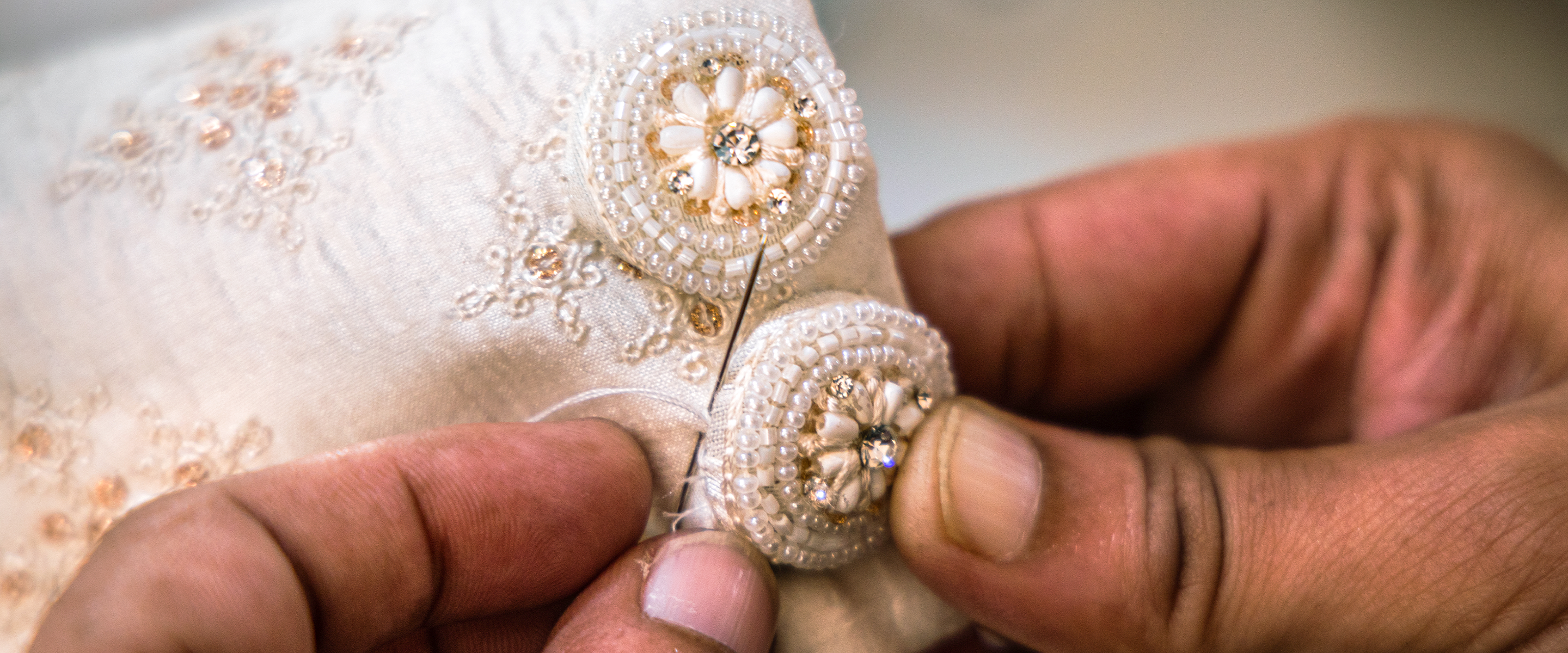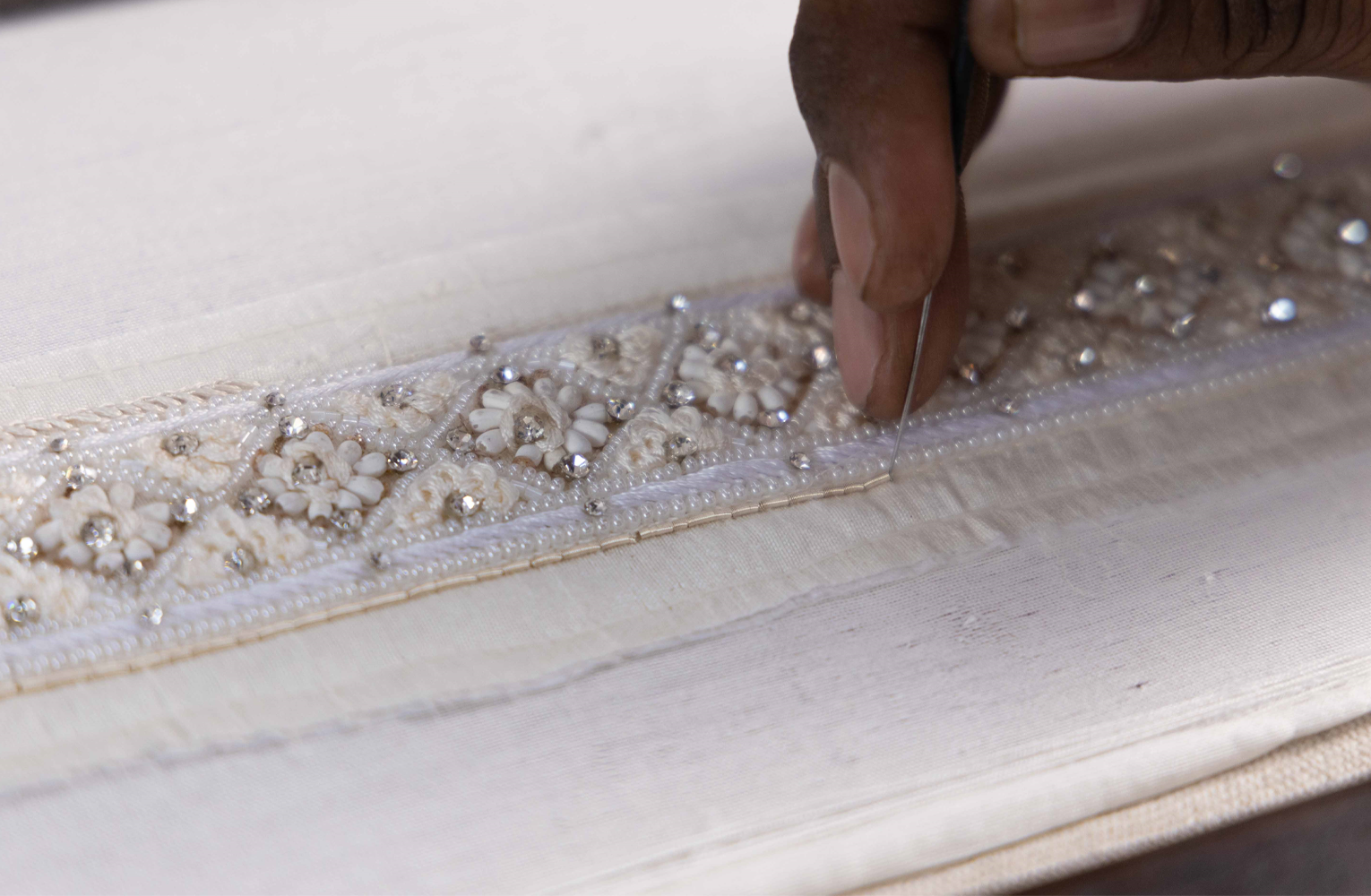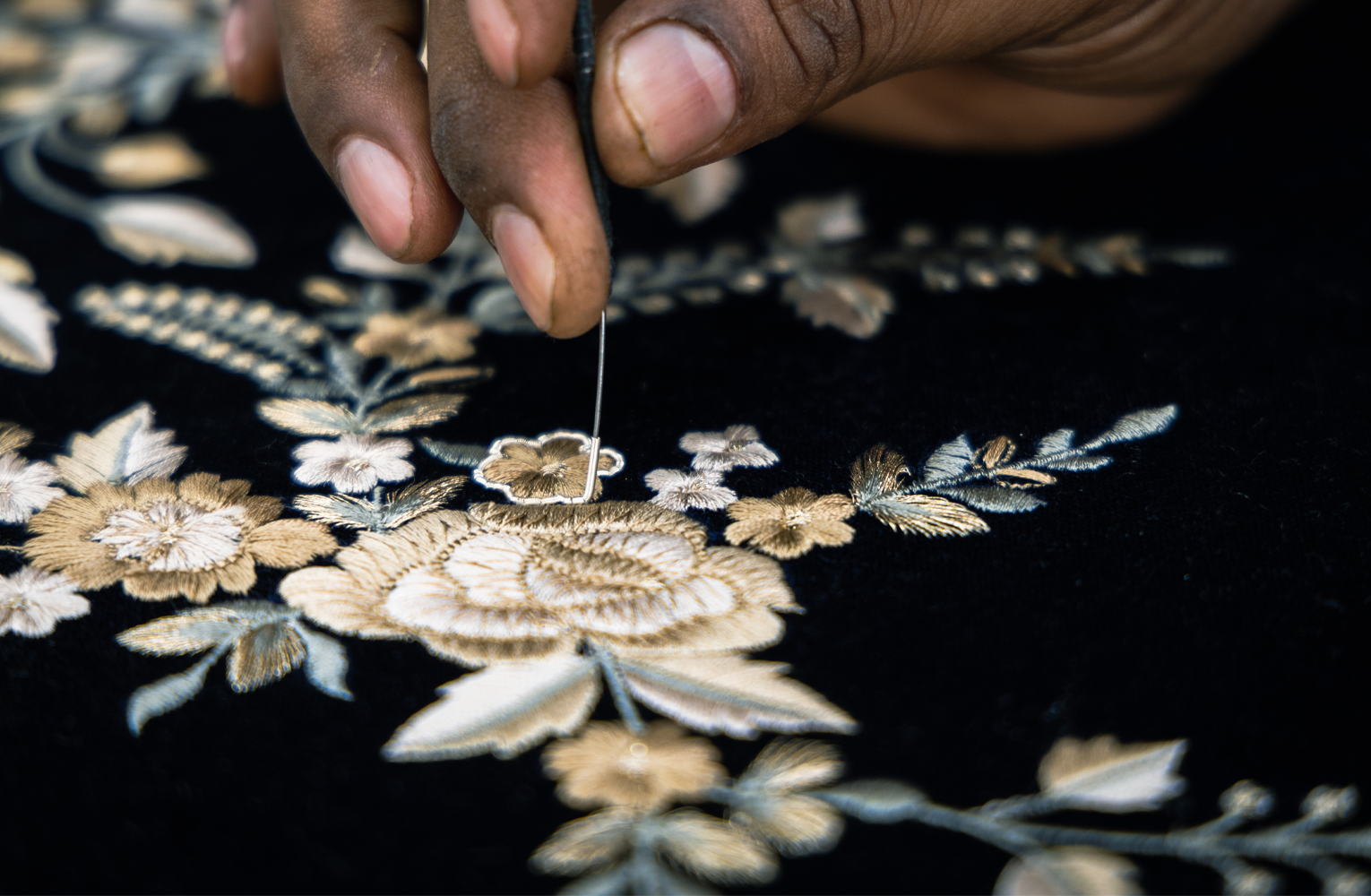Exploring Adda Embroidery: A Time Honoured Tradition
You might wonder, what exactly is "Adda"? The term refers to the wooden frame that securely holds the fabric in place to prevent any wrinkles or folds during the embroidery process. The fabric is stretched using parallel wooden bars that lock tightly, allowing for continuous needlework.
Embroidery on the traditional "Adda'' frame ensures high-quality craftsmanship in fashion garments. The Adda, a critical tool in embroidery, is used primarily for intricate Ari or Suzani work.
Adda work embroidery, a magnificent craft steeped in history and tradition, continues to be a cornerstone of Indian textile artistry. This intricate handwork is not only a testament to the skill of the artisans but also a cultural emblem that has adorned everything from everyday wear to bridal couture across generations.
Adda embroidery often utilises a specialised needle known as an 'Aari', which features a hook at the end, perfectly suited for detailed threadwork and beadwork. This design enhances the efficiency and precision of the embroidery process. The technique incorporates a variety of threads, such as silk, cotton, and metallic, and is often embellished with beads, sequins, and stones to elevate the aesthetic appeal of the embroidery.
More than just an artistic technique, Adda work holds significant cultural value and is integral to crafting traditional Indian garments like sarees, lehengas, and sherwanis. These pieces are frequently worn during key ceremonies and festivals, underscoring the cultural relevance of this embroidery style.
Adda embroidery is celebrated throughout India, but it is especially prominent in regions like Kolkata and Gujarat, where it is a staple of local traditional attire.
Working on the Adda not only maintains a consistent quality throughout the embroidery process but also enhances efficiency and precision.
The Origins of Adda Work Embroidery
Tracing its roots back to ancient times, Adda work embroidery has been a part of Indian heritage for centuries. The term "Adda" refers to the wooden frame used in this type of embroidery. Historically, it has been associated with royal garments and opulent textiles, crafted to showcase the wealth and status of the wearer. Over the years, this embroidery style has evolved, but the essence of crafting it on the Adda frame has remained unchanged.
Adda embroidery, which traces its origins back to the Vedic period, features a unique needle design with a sharp, pointy hook at the end. The earliest needles of this type were discovered in the archaeological site of Mohenjo-Daro, now located in Pakistan.
How Does It Work?
This embroidery technique utilises various types of silk, thread, and metallic strands to meticulously place sequins and beads onto the material, creating vibrant designs. The specialised pointy hook needle facilitates the aari work, while the traditional zardosi thread needle is used for designs without embellishments. This efficiency comes from the ability to use thread directly from the spool without needing to cut or tie knots.
How Adda Embroidery is Done?
The process of Adda embroidery begins with the stretching of the fabric on the Adda frame. This frame is crucial as it keeps the fabric taut, allowing the artisan to perform precise and intricate needlework. The embroidery is done using a variety of threads, including silk, cotton, and metallic threads, which are embellished with beads, sequins, and other decorative elements.
The tools used in Adda embroidery include:
- The Adda: An adjustable wooden frame that holds the fabric.
- Aari or zardosi needle: A specialised needle with a hook used to create intricate designs.
- Threads and embellishments: Silk, cotton, metallic threads, beads, sequins, and stones.
Artisans sit around the Adda, meticulously adding embellishments and creating designs that can range from floral patterns to complex geometric shapes. This method not only ensures precision but also facilitates a communal working environment where techniques and styles are shared and preserved.
Impact on Industries
Adda embroidery is not only cherished for its elegance and tradition in India but has also captured the admiration of global markets. Historically, the Mughals were so captivated by Indian embroidery that they established specialised workshops for these crafts. However, over time, with Western influences, the demand for such crafts declined, leading to the exploitation of artisans. Efforts have since been made by the government and private entities to preserve and promote this ancient art.
Adda Embroidery in Modern Fashion
Today, Adda embroidery is highly prized in the fashion industry, both in India and internationally. At Manyavar, we incorporate Adda work into the modern Indian man’s wardrobe, bringing traditional craftsmanship to contemporary fashion.
The fusion of this age-old Indian craft with modern fashion trends represents a sought-after, culturally rich blend. Beyond its traditional use in garments, Adda embroidery now enhances accessories like dupattas, jutis and safas.
In response to modern needs and styles, Adda embroidery has adapted over time. Contemporary designs often merge traditional motifs with modern aesthetics, making Adda embroidered items both fashionable and deeply rooted in cultural tradition.
Preserving the Craft
At Manyavar, it is an integral part of our mission and vision every day, to support artisans by creating collections that celebrate the craft and by providing a sustained livelihood to the creators of these pieces.
This is our way of supporting the legacy of artistry passed down through generations. As we wear and display these beautiful creations, we support an ancient craft and carry forward a piece of history embellished with cultural identity. Whether it graces a small handmade button or an elaborate sherwani, Adda embroidery remains a cherished jewel in the thriving designs of Manyavar.



